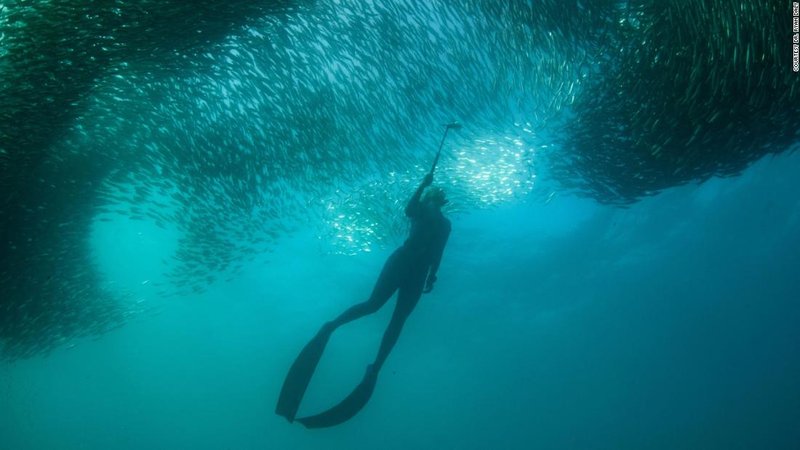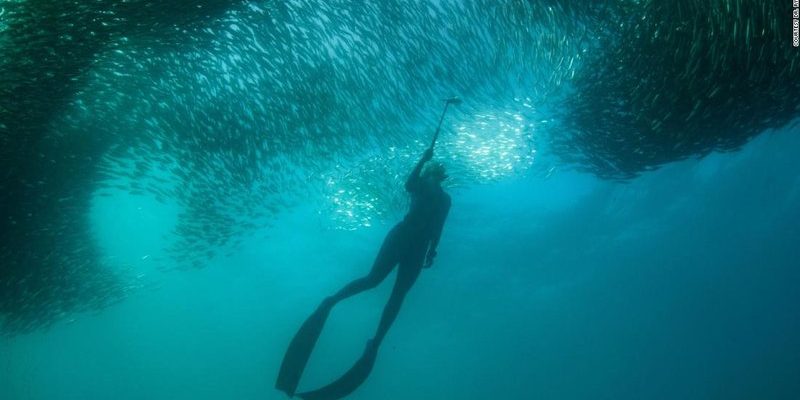
When you think of sardines, you might picture a tin can packed tightly with little fish, right? It’s like a tiny ocean adventure that fits right in your pantry. But beyond their culinary appeal, have you ever wondered about interacting with these small, slippery swimmers in a more hands-on way? Can we safely interact with them in their natural habitat, or are these little fish best left alone? Let’s dive deeper into the world of sardines and explore what makes them tick—or swim, in this case!
Sardines are fascinating creatures. They’re known for their schooling behavior, meaning they often swim in large groups. This not only protects them from predators but also makes them an interesting subject for those who love marine life. If you’ve ever thought about getting up close and personal with sardines, whether for fishing, research, or just out of curiosity, it’s essential to understand how to interact with them safely and responsibly. So grab a cup of coffee, and let’s jump into all the details.
What Are Sardines Anyway?
Sardines are small fish, typically found in the ocean’s warm waters. They belong to the herring family and are known for their high nutritional value. When you eat canned sardines, you’re not just enjoying tasty seafood; you’re also getting a healthy dose of omega-3 fatty acids, protein, and various vitamins. They’re like little powerhouses of nutrition swimming around in the sea!
In terms of size, sardines usually range from about 6 to 12 inches long. They have silver skin and a striped pattern along their sides, which can make them quite beautiful when you see them in schools. Picture a shimmering wave of fish moving together; it’s a sight that can take your breath away! Their schooling behavior plays a big role in their survival, but it also makes them a favorite target for both predators and fishermen.
Can You Safely Catch Sardines?
If you’re thinking about fishing for sardines, you’ll be happy to know that it can be done safely and sustainably. Many fishermen catch sardines using a technique called “purse seining.” This method involves surrounding a school of sardines with a large net, which is then drawn tight to capture the fish. It’s efficient and effective, but it’s essential that it’s done responsibly to protect their populations.
However, before you grab your fishing gear, here are a few things to keep in mind:
- Know the Regulations: Fishing for sardines often comes with specific rules regarding catch limits and fishing seasons. Always check local regulations to ensure you’re fishing legally.
- Sustainability Matters: Overfishing can lead to depletion of sardine populations. Consider supporting sustainable fishing practices to help maintain their numbers.
- Stay Safe: Always wear appropriate gear when fishing, such as life jackets if you’re on a boat, and be aware of your surroundings.
Observing Sardines in the Wild
If fishing isn’t your thing, you can still enjoy sardines by observing them in their natural habitat. Snorkeling or diving in areas where sardines are plentiful can be an exhilarating experience. Picture yourself floating in the water as a school of sardines swirls around you, a shimmering cloud of silver. It’s like being inside a nature documentary!
When observing sardines, here are some tips for a safe and enjoyable experience:
- Keep a Safe Distance: While it might be tempting to swim right into the school, keeping a respectful distance allows you to appreciate the fish without stressing them out.
- Avoid Touching Them: Sardines are delicate creatures. Touching them can harm their scales and disrupt their natural behaviors. Enjoy their beauty from afar!
- Be Mindful of Your Environment: Ensure you’re not causing harm to the ecosystem. Avoid standing on coral or disturbing marine plants.
The Importance of Sardines in the Ecosystem
Sardines play a vital role in their ecosystems. They act as a food source for larger fish, birds, and marine mammals. By keeping sardine populations healthy, we support the entire marine food web. When you think about it, interacting with sardines isn’t just about fishing or observing; it’s about understanding their place in the ocean’s delicate balance.
Moreover, sardines contribute to nutrient cycling in their habitats. As they feed on plankton, they help keep these populations in check. Their movement throughout the water also stirs up nutrients, which benefits other marine life. So, by ensuring we interact with sardines responsibly, we’re also doing our part to support marine ecosystems.
How to Handle Sardines After Catching Them
If you’ve successfully caught sardines, handling them properly is key to ensuring they remain safe to eat. Here’s a simple guide on how to do this:
- Keep Them Cool: As soon as you catch them, place the sardines on ice. This helps preserve their freshness and flavor.
- Clean Them Right Away: If you plan to eat them, clean them as soon as possible to prevent spoilage. Rinse them in cold water and remove the entrails.
- Store Correctly: If you’re not cooking them immediately, store your cleaned sardines in the refrigerator or freezer, depending on when you intend to use them.
Ethical Considerations for Interaction
Interacting with sardines safely means being ethical about how we approach them in both fishing and observation. It’s crucial to remember that these fish are living creatures with their own roles in the ecosystem. Therefore, we must practice sustainability and respect for marine life.
Consider participating in local conservation efforts aimed at protecting sardine populations. Whether you’re volunteering for beach clean-ups or supporting organizations focused on marine health, every little bit helps.
Wrapping Up: Enjoying Sardines Responsibly
Can humans interact safely with sardines? Absolutely! Whether you’re fishing for them, observing them in the wild, or simply enjoying them in your meals, there are safe and responsible ways to appreciate these tiny fish. By understanding their role in the ecosystem, practicing sustainable fishing, and respecting their natural habitat, we can enjoy all that sardines have to offer while ensuring their survival for future generations.
So next time you see sardines on your plate or swimming in the wild, remember the balance of nature that they represent. By interacting safely and ethically, we’ll help keep our oceans healthy and vibrant. Now that’s something to feel good about!

